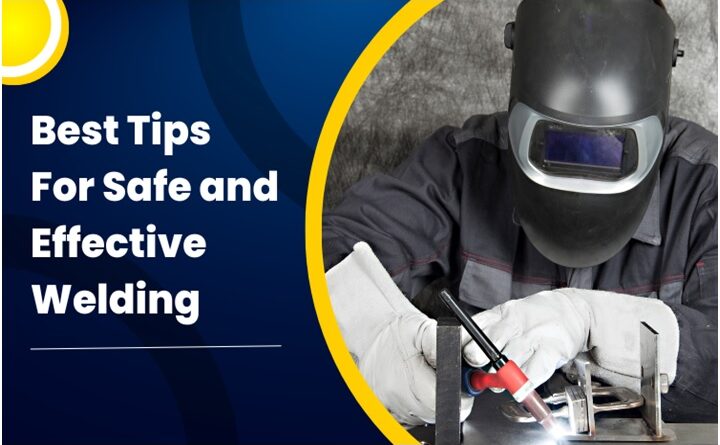7 Best Tips For Safe and Effective Welding
Welding is a dangerous and potentially hazardous activity. It involves the use of extremely hot temperatures and hazardous materials, and any safety precautions must be taken seriously. Unfortunately, many welders don’t take the necessary safety measures to avoid injury or illness, which can lead to severe consequences. However, buying quality welding machines and equipment, such as a cutting machine and a welding hose pipe, to use their safety is really crucial. Moreover, a welder also needs to know all the tips and tricks that they may use while working. Here are some of the most important tips for safe and effective welding:
Tips You Need to Know For Safe and Effective Welding
Prepare Properly
Before beginning any welding project, make sure you are familiar with the tools and equipment you’ll be using. Wear the proper protective gear, including safety glasses, a welding mask, and a flame-resistant coat. Additionally, you should make sure you’re working in a clean and well-ventilated space. Knowing the different types of tools and equipment available will enable you to select the most suitable tools for the job and make sure that you get the best results from your welding.
Use the Right Materials
When welding, it’s important to use the right materials for the job. Different jobs require different materials, such as various alloys, ferrous metals, and non-ferrous metals. Make sure you have the correct materials for the job, and that they are compatible with the type of welding, you’ll be performing. The right material will also help you in ensuring that the weld is strong and resistant to corrosion and fatigue. The right material also helps reduce the risk of heat-related damage to the surrounding area and the weld itself, which can lead to costly repairs or replacements.
Maintain Safe Distances
When welding, it’s important to keep a safe distance from any combustible materials. Make sure you keep at least 10 feet away from any combustible materials, like wood, paper, and other flammable substances. Additionally, welding can produce toxic fumes and gases that can be hazardous to your health if you are too close. Therefore, it is important to always keep a safe distance from combustible materials when welding.
Wear Appropriate Clothing
Welders should always wear clothing that is flame-resistant and won’t catch fire. Avoid wearing loose clothing and jewelry that could catch sparks or sparks could be attracted to. Additionally, make sure you wear closed-toe shoes that cover the entire foot. The clothing should be flame-resistant and made of heavy-duty material that is able to withstand hot sparks and molten metal. Additionally, it is important to wear safety glasses or a welding face shield to protect the eyes from intense radiation.
Ensure Proper Ventilation
Welding can create dangerous fumes and gases, so it’s important to make sure you have proper ventilation in your welding area. Most welding machines produce fumes, and you should always wear a respirator while welding. Additionally, you should make sure to use a ventilation system to exhaust any fumes from the area. Moreover, proper ventilation helps to keep the work area cooler and less humid, which can help to reduce the risk of fires and improve overall efficiency.
Handle Equipment Carefully
Welding equipment, such as a welding cutting machine, as they are delicate, and you should always handle it with care. Make sure you keep all wires and cords away from any combustible materials, and never touch any moving parts without the proper safety equipment. It is also important to ensure that the equipment is not damaged or broken, as this can cause serious injury to the welder or to anyone in the vicinity. Additionally, it is important to practice proper safety protocols when using welding equipment, as improper handling of the equipment can lead to accidents or even fires.
Practice Good Hygiene
Welding can be a dirty job, so it’s important to practice good hygiene. Make sure you wash your hands and face often, and always wear a protective face shield or mask. Additionally, you should never eat, drink, or smoke in the welding area. Practicing good hygiene when welding can help to reduce the risk of illness or injury from exposure to welding fumes. Additionally, good hygiene practices can help to prevent contact with hot metal and sparks, which can cause serious burns.
Final Takeaway!
Welding can be a dangerous and complex task, but with the right safety measures and best practices, it can be a safe and efficient process. By following the seven best tips for safe and effective welding, you can ensure that you are creating a safe working environment for yourself and your team, as well as producing quality welds. With a little knowledge and the right equipment, welding can be a rewarding and enjoyable experience.


